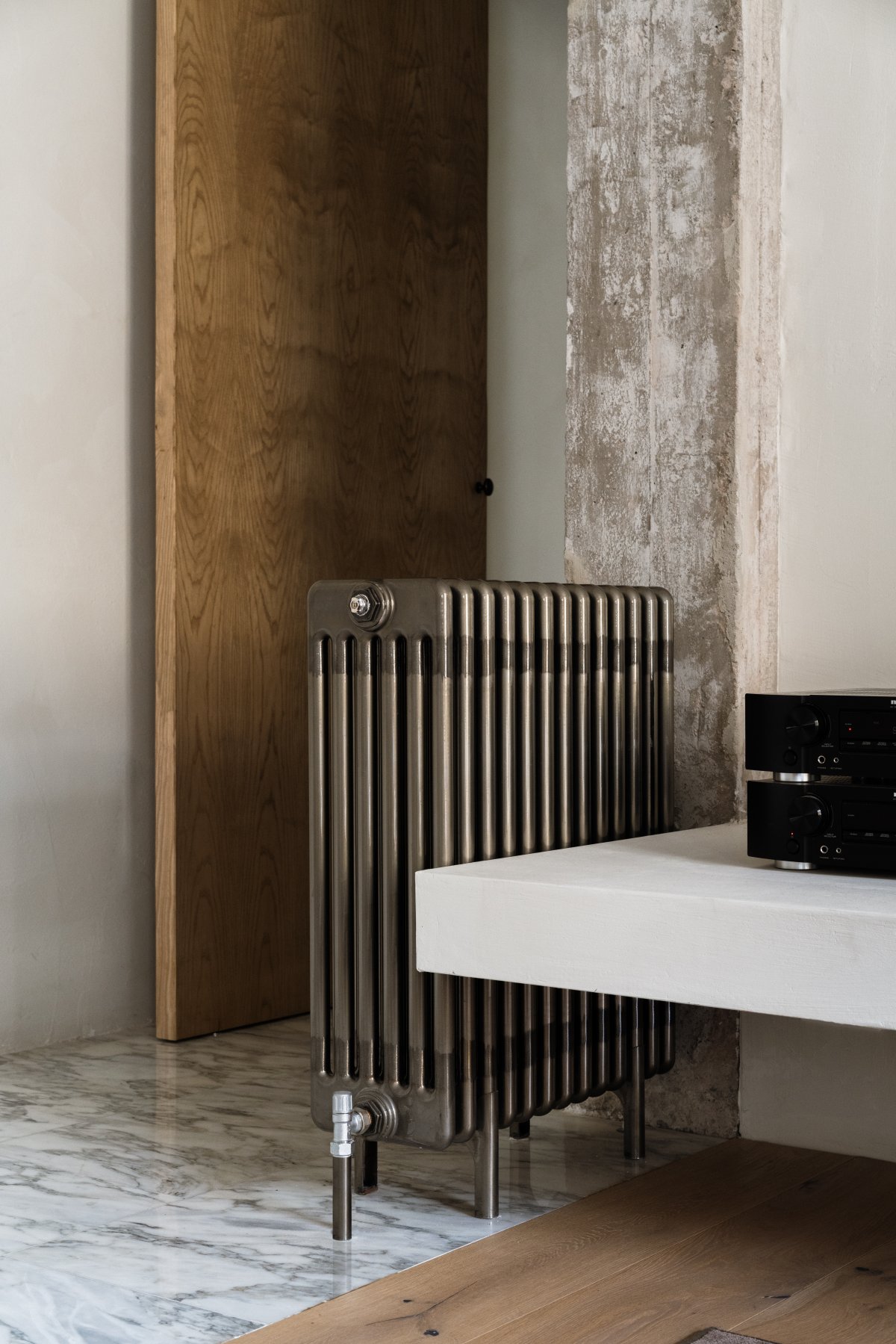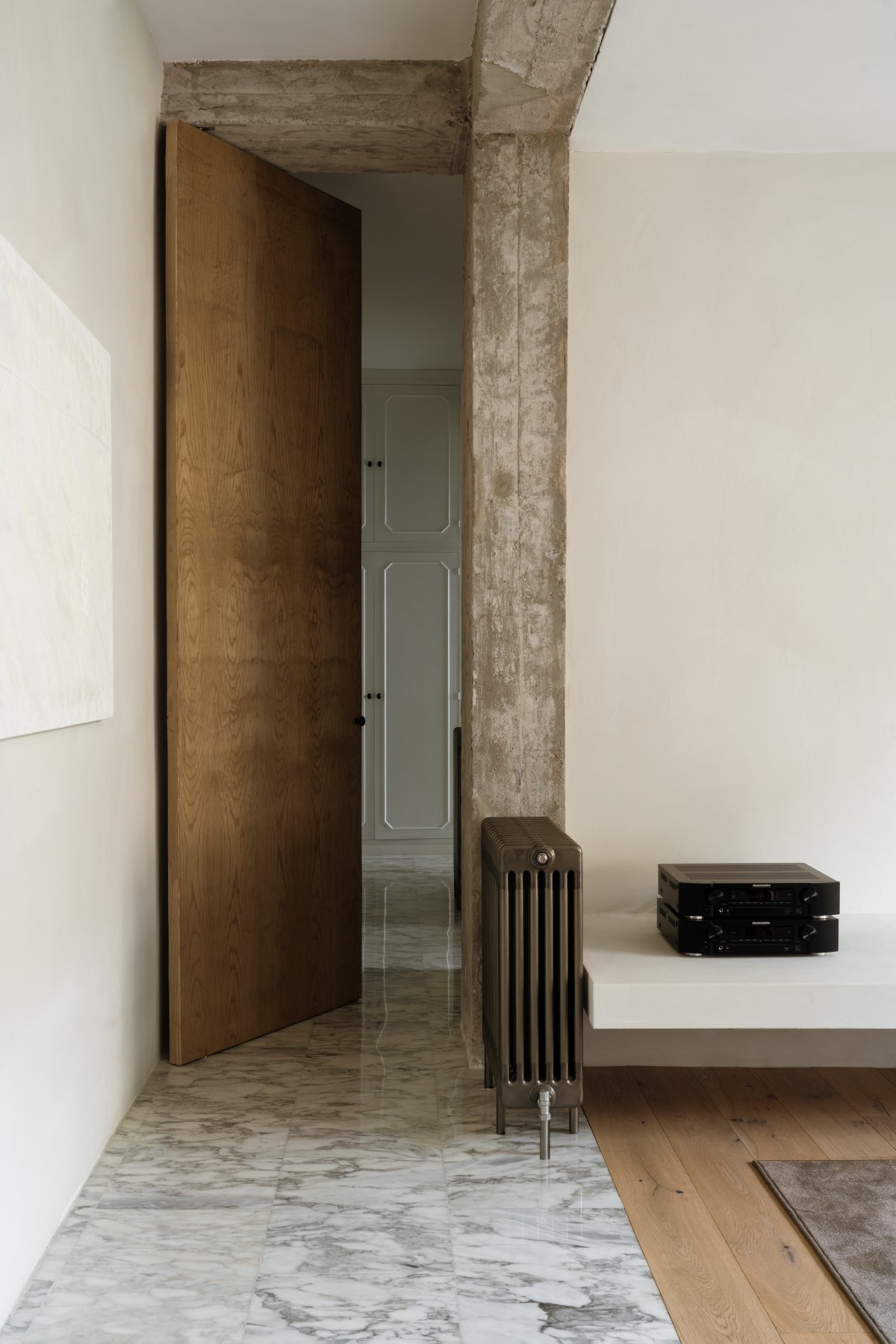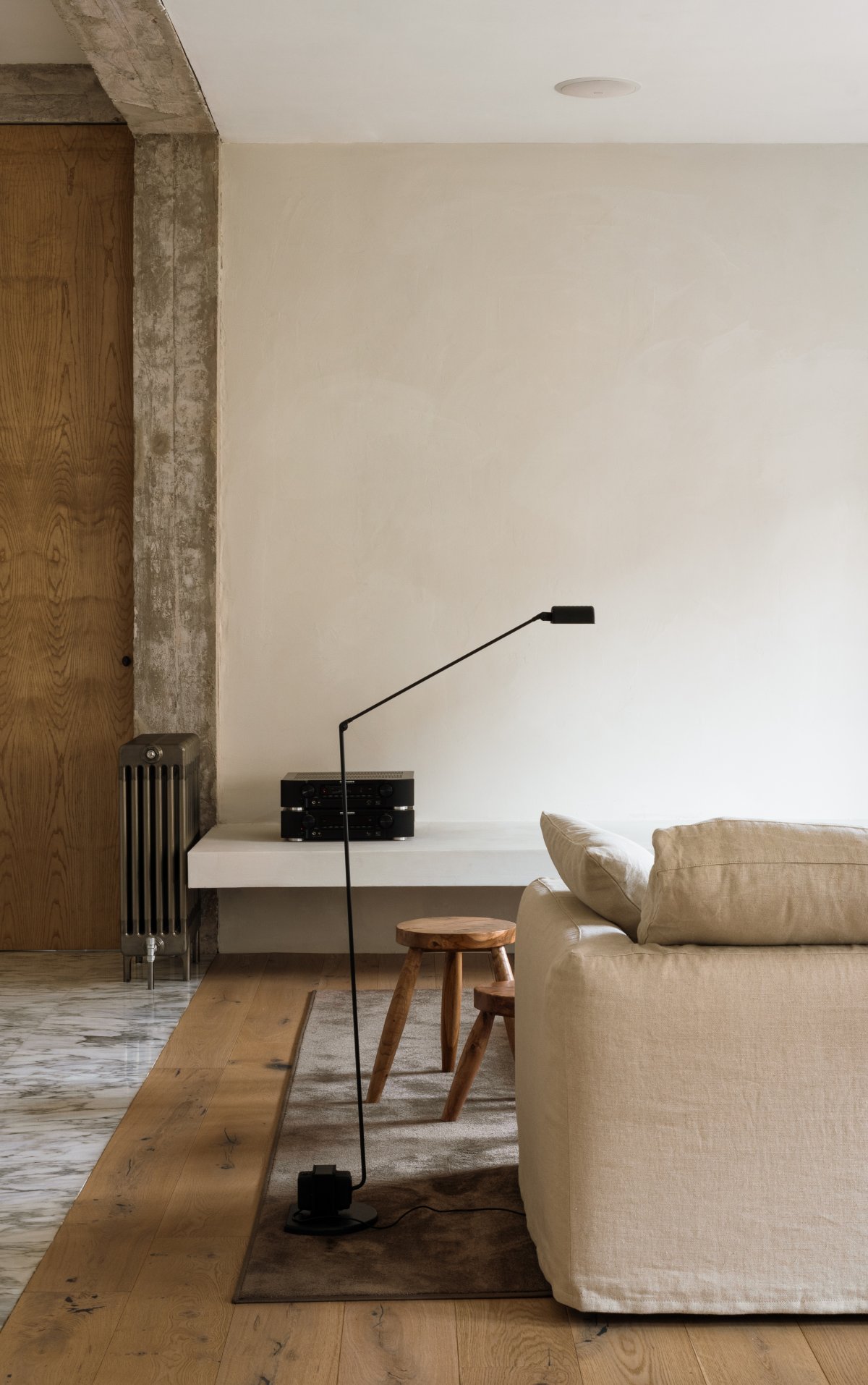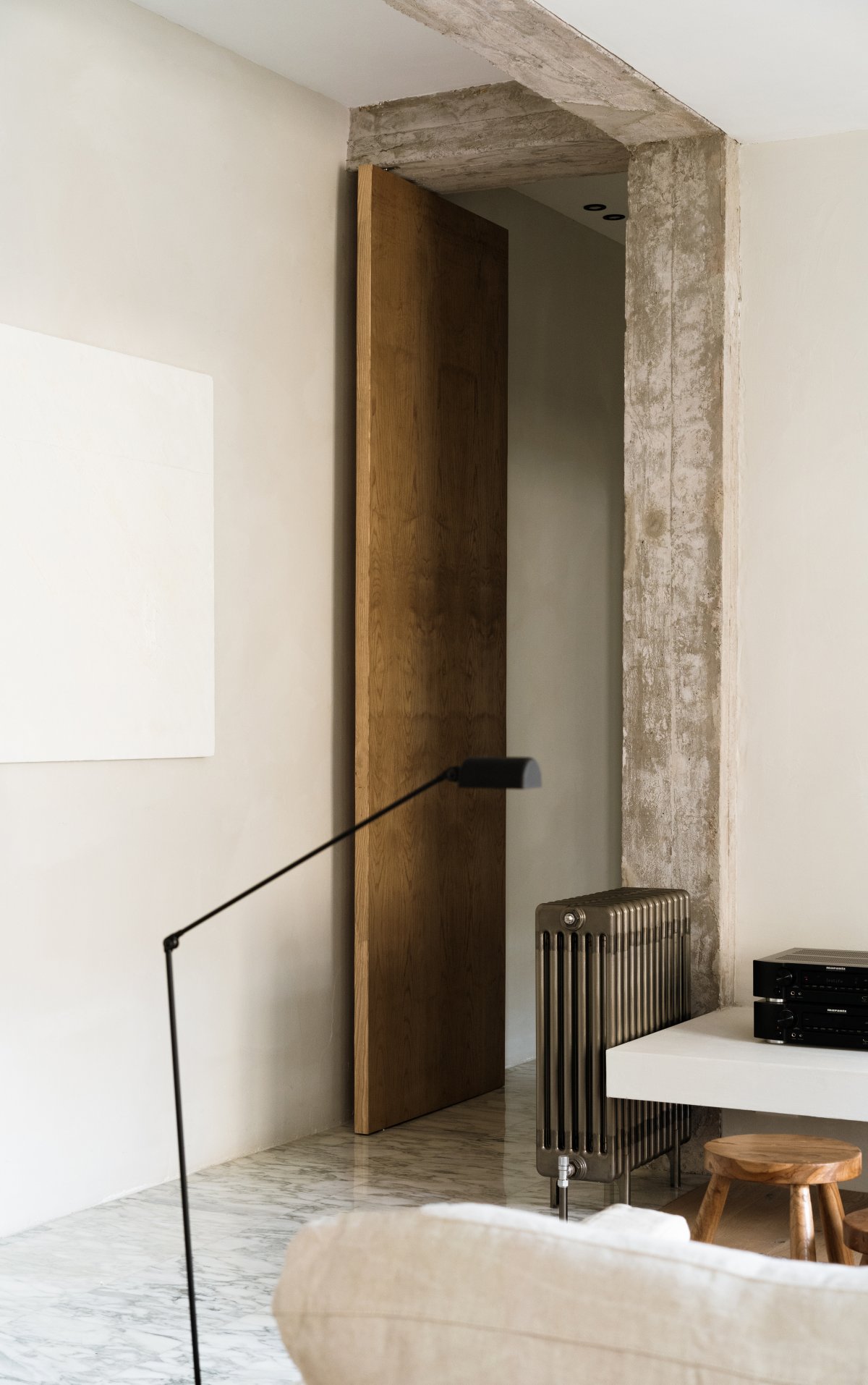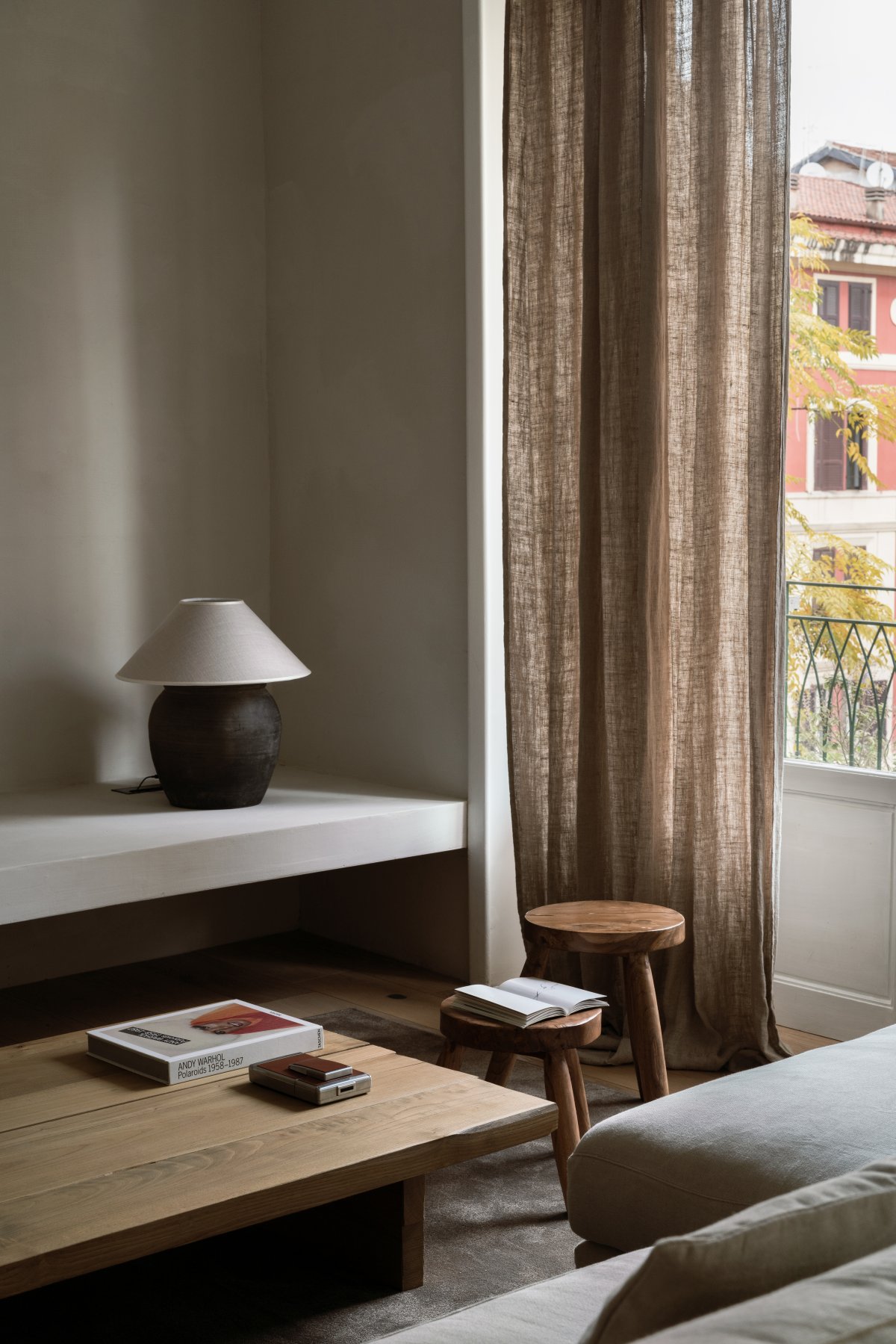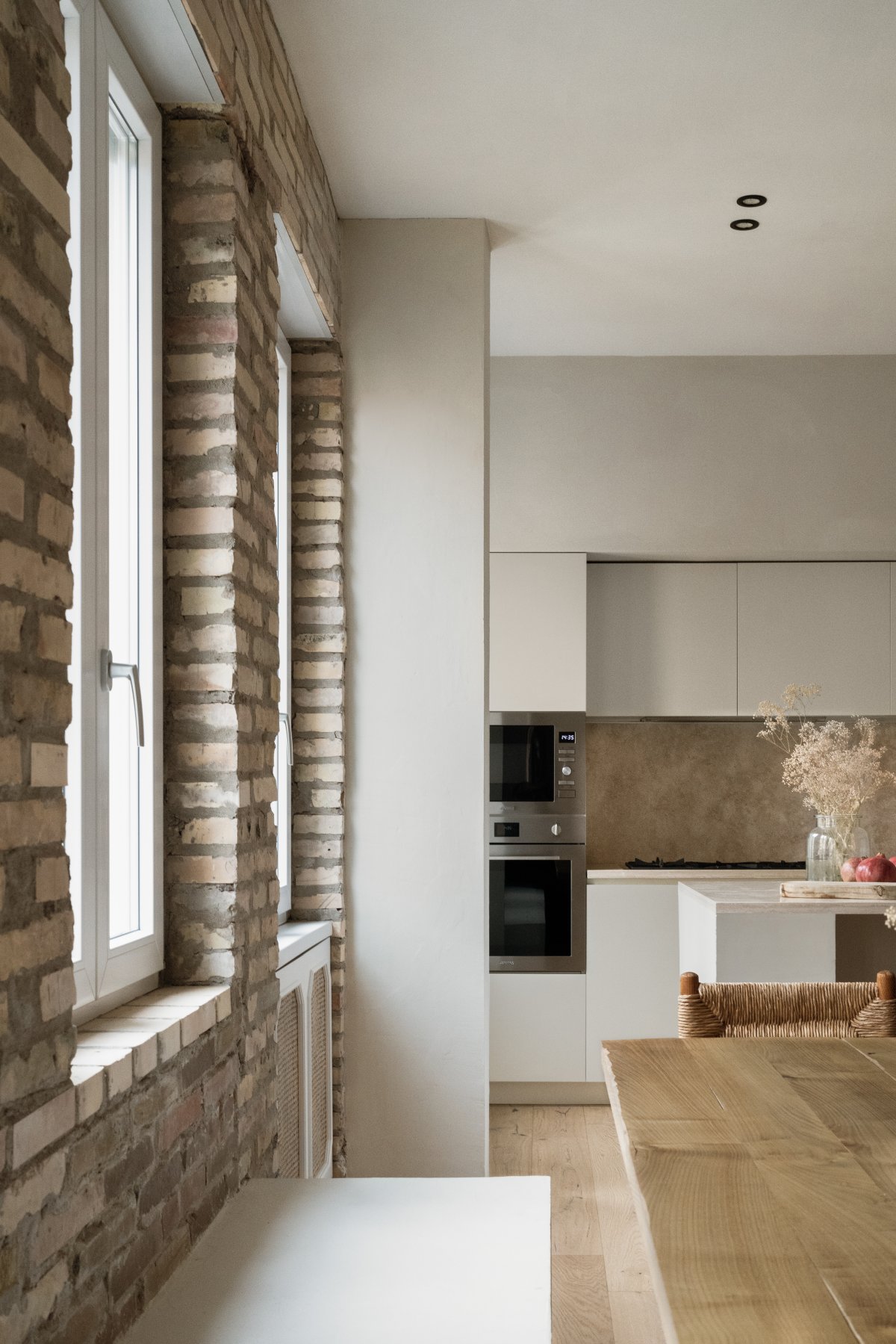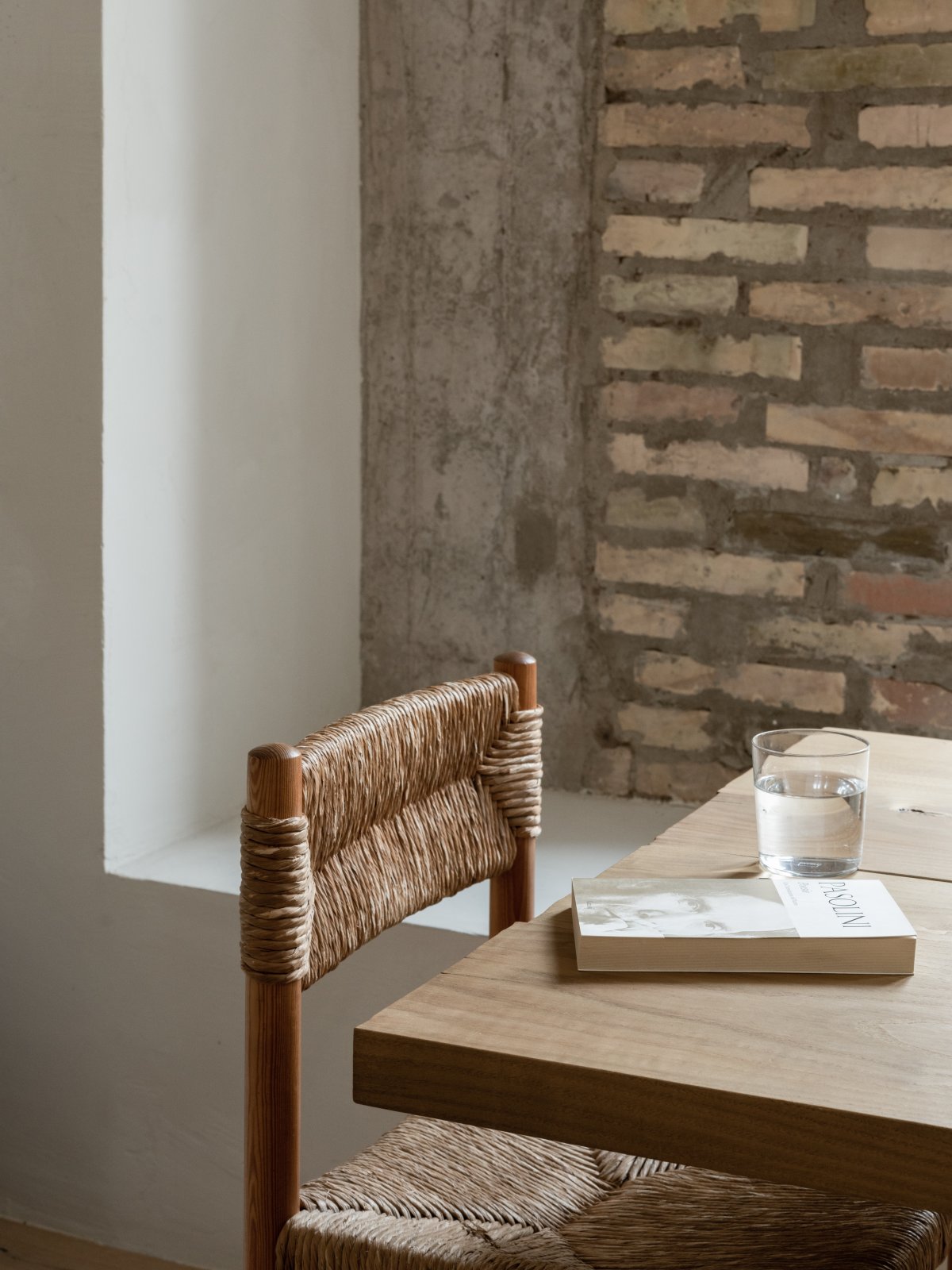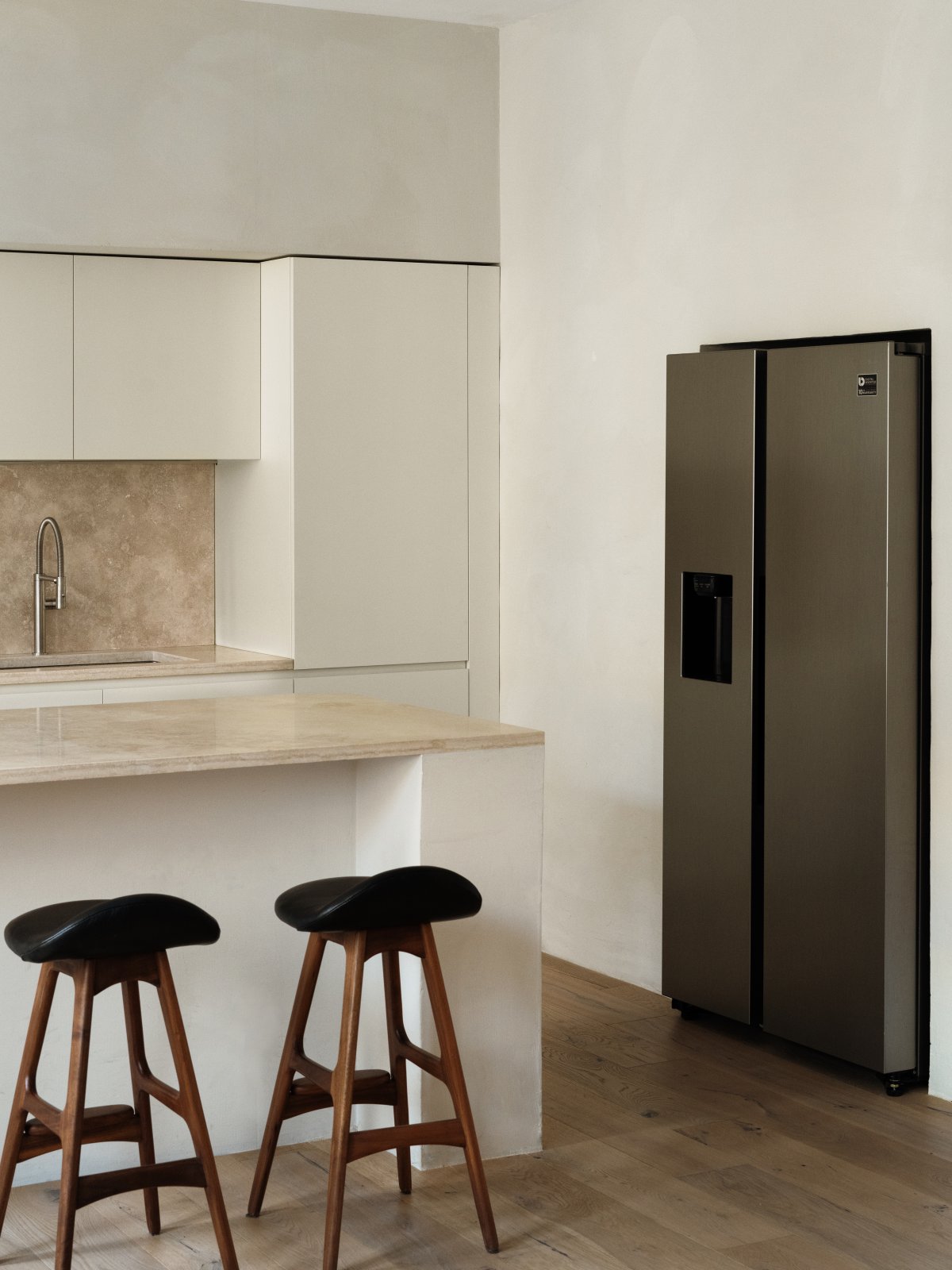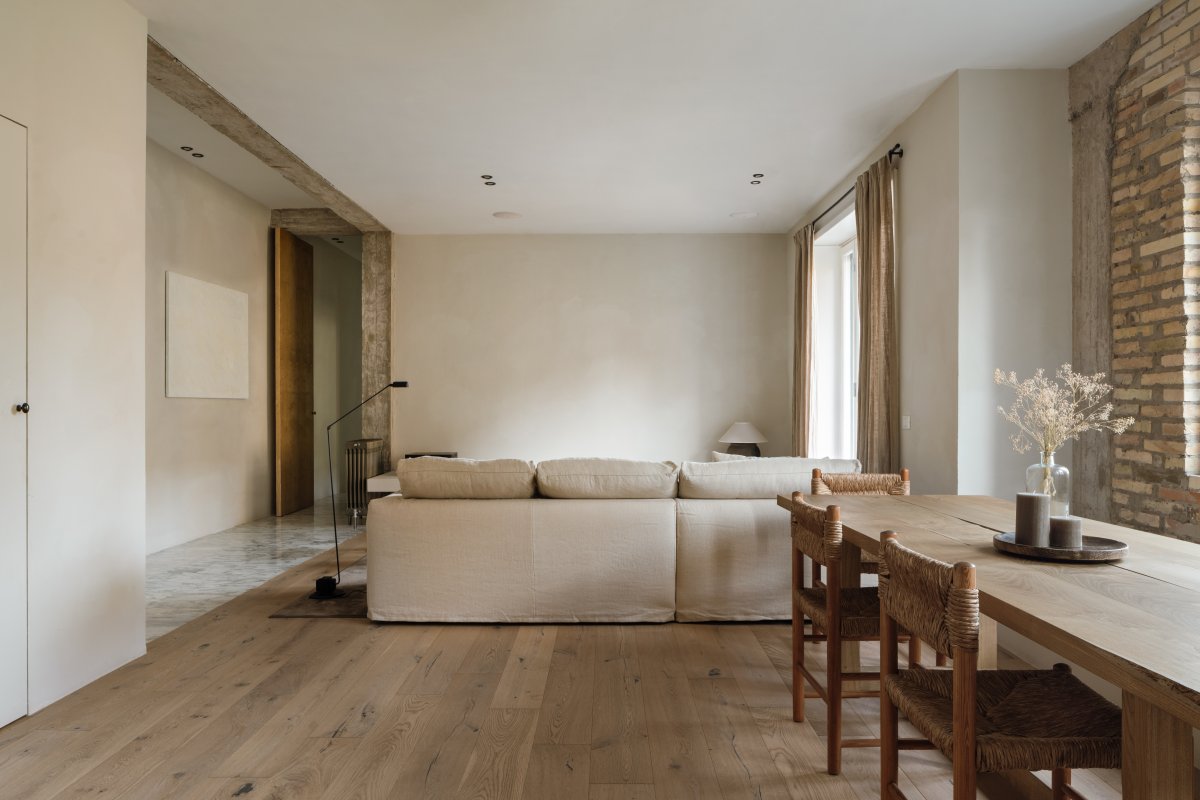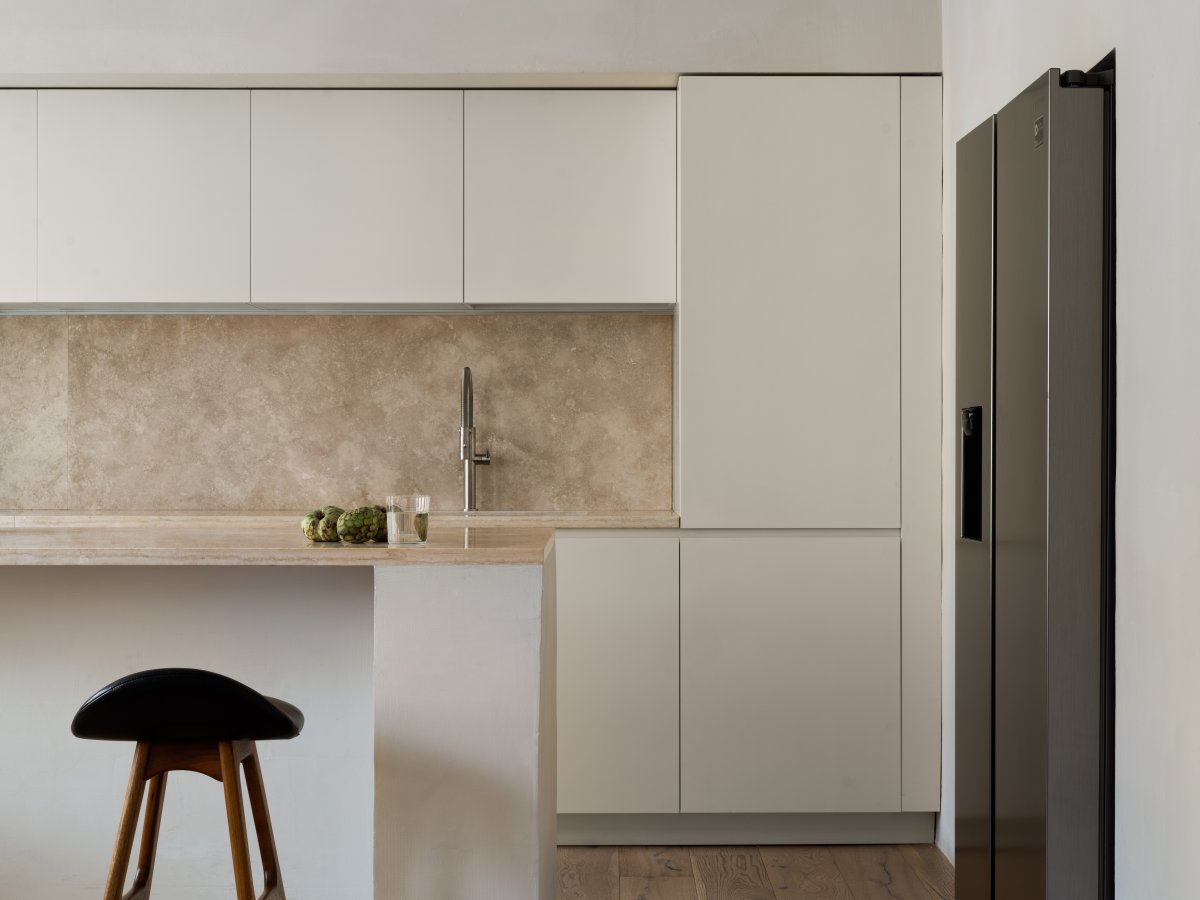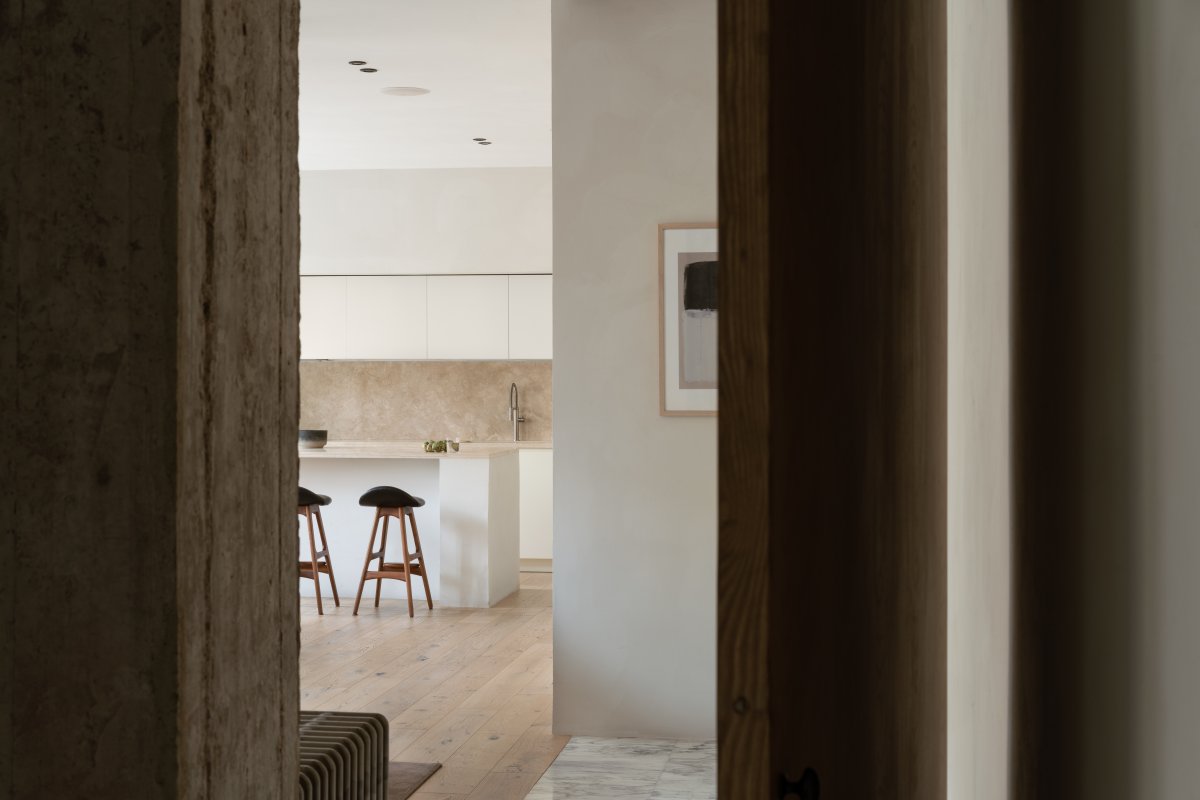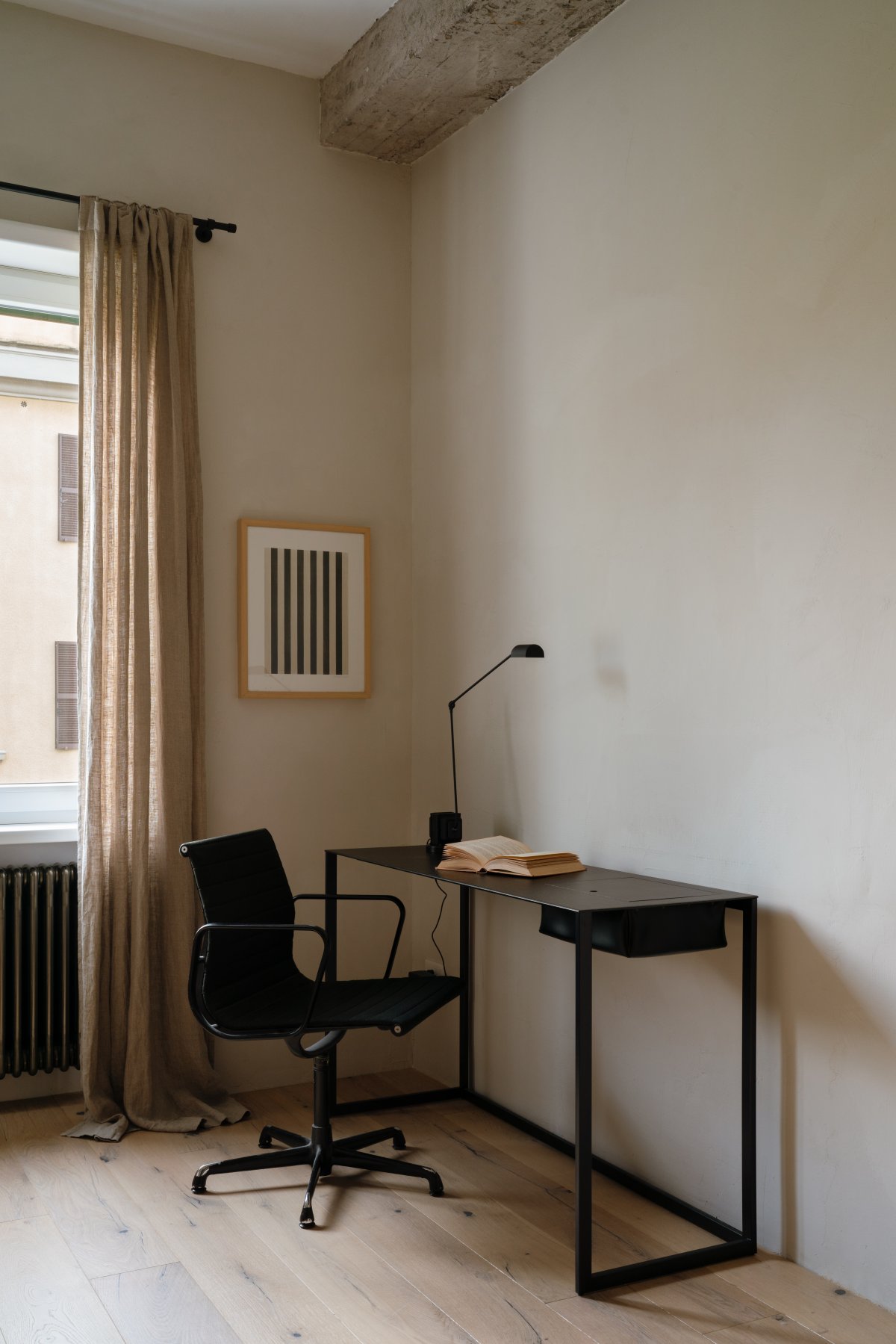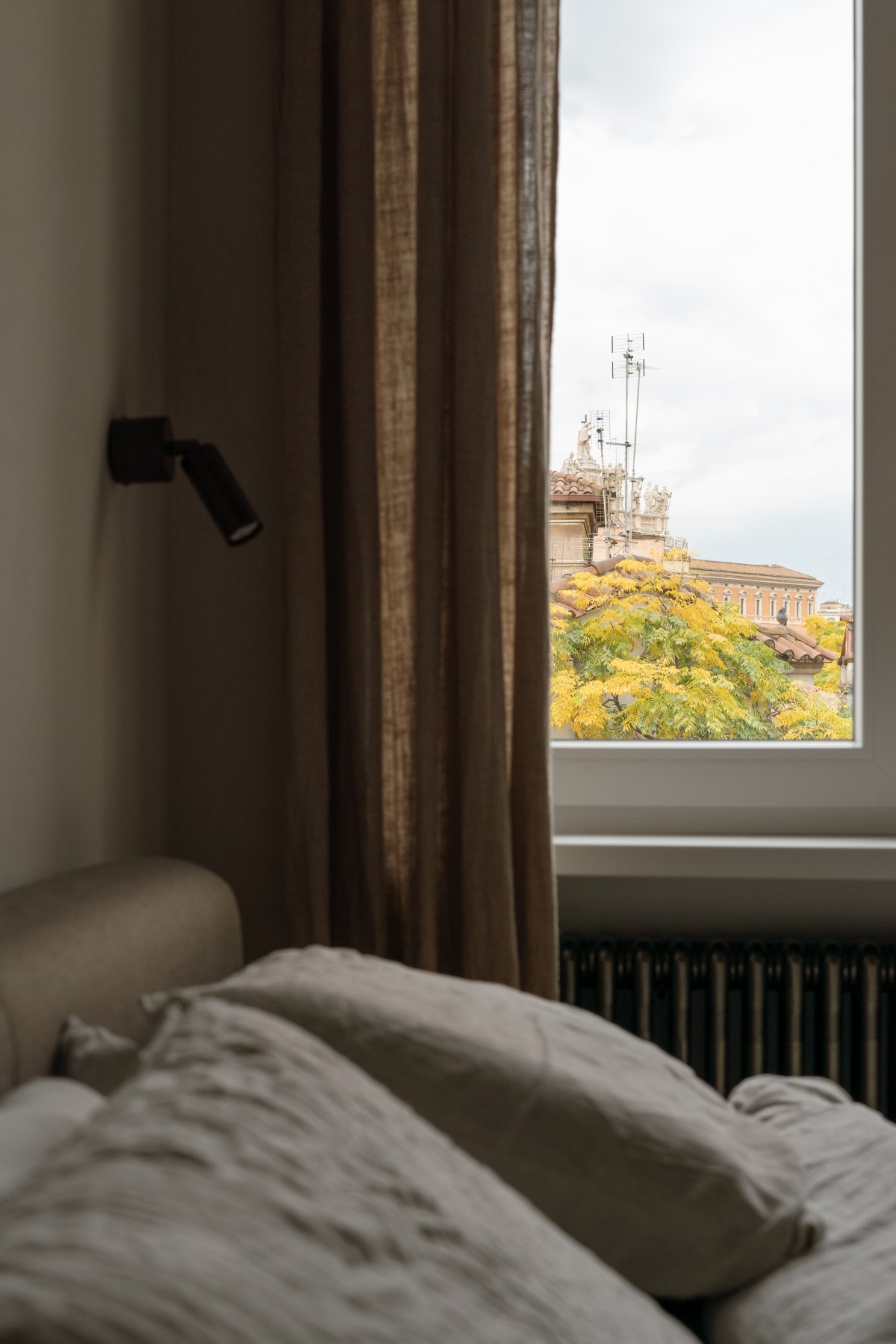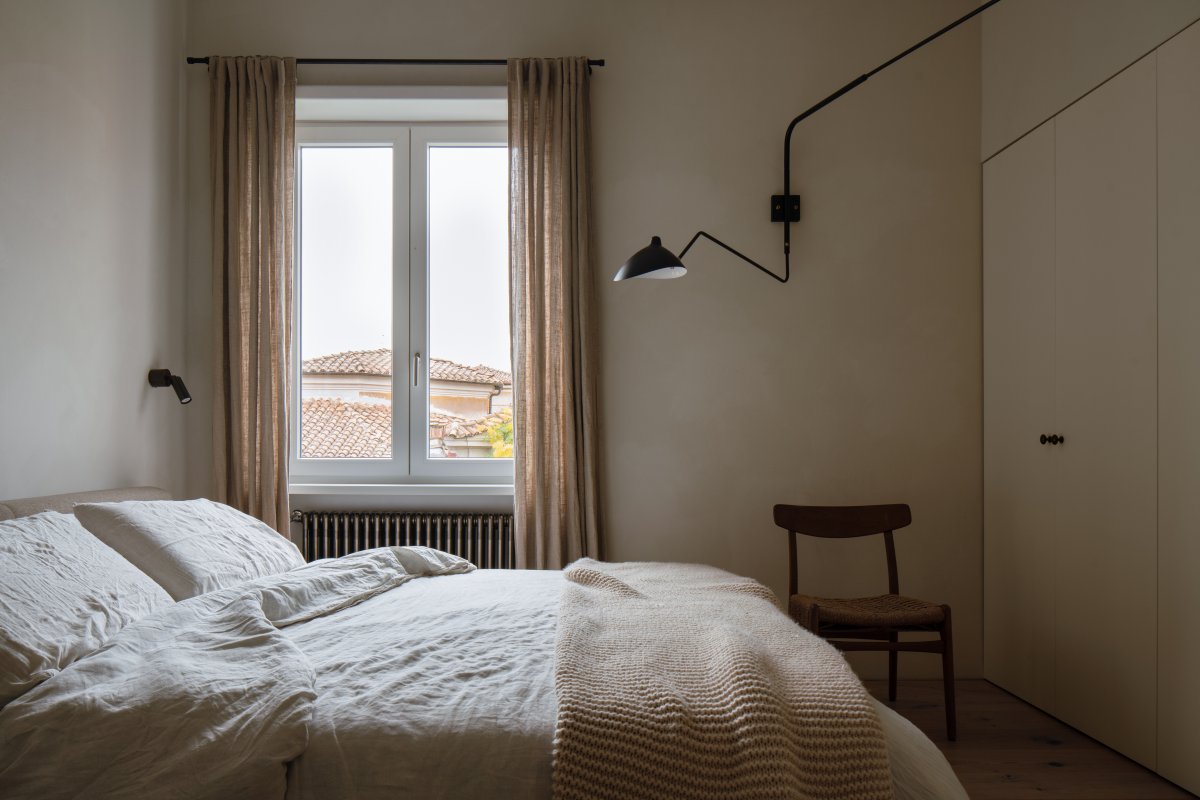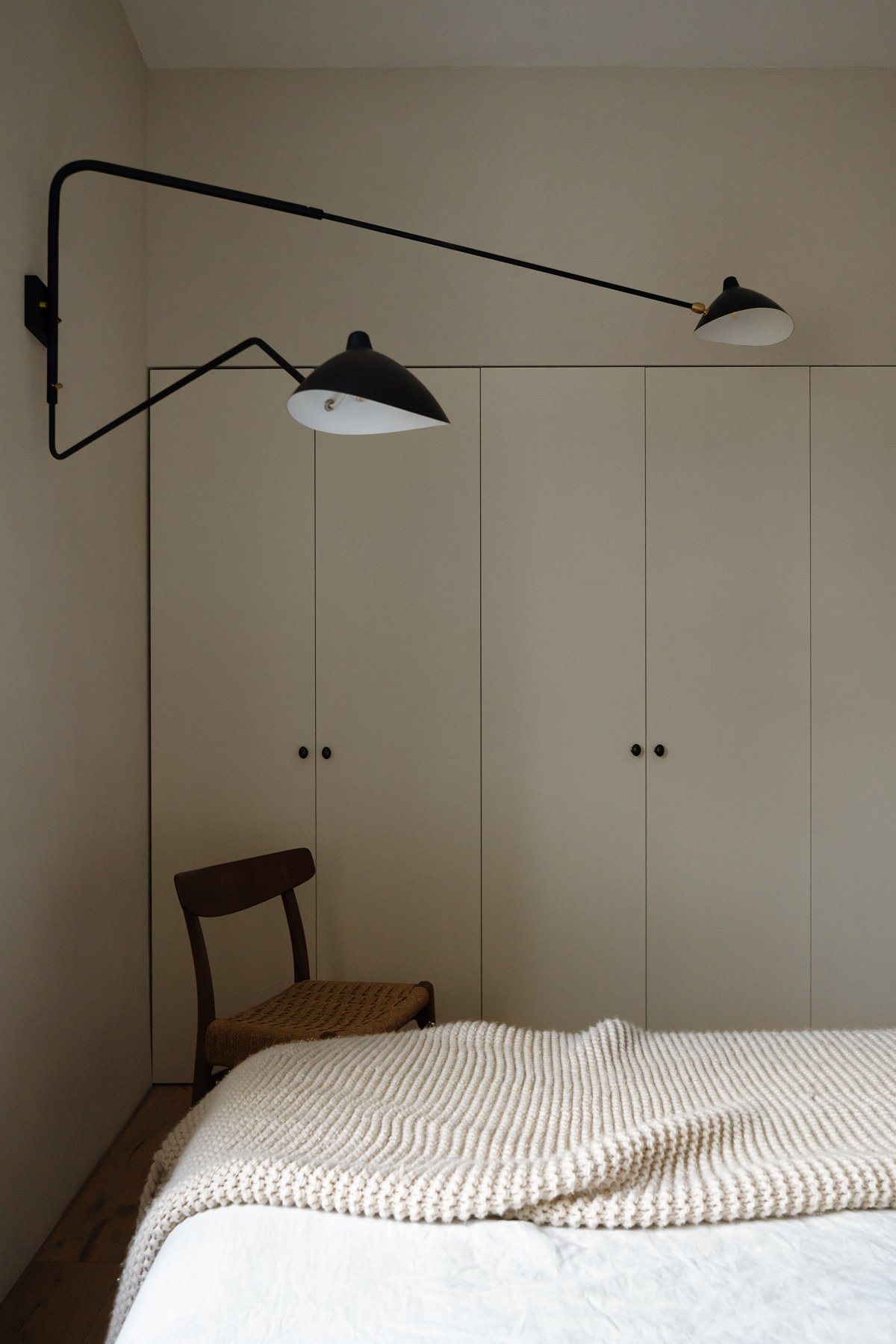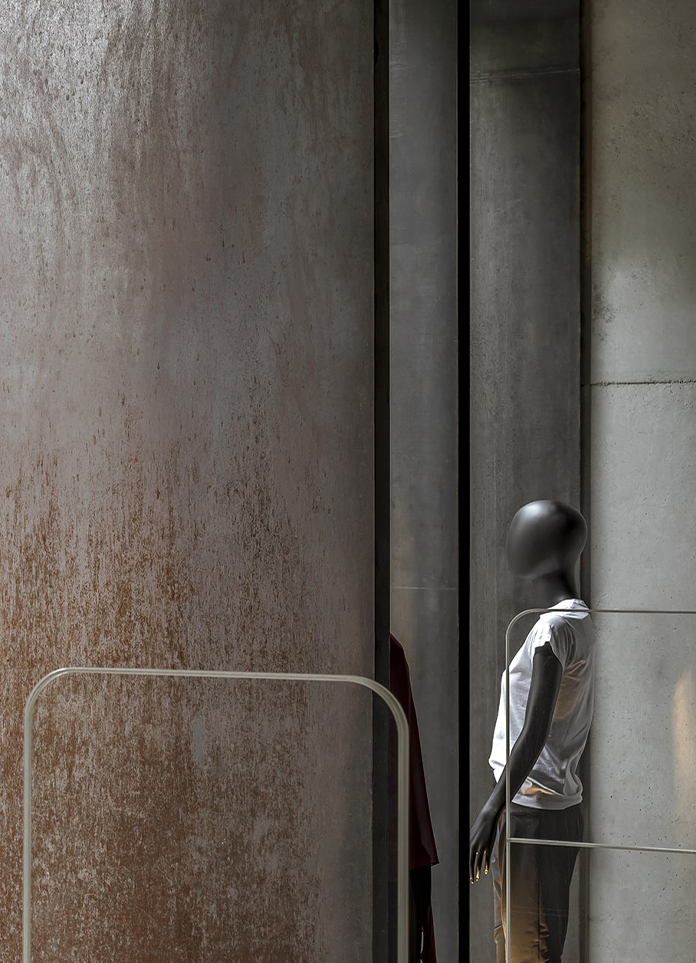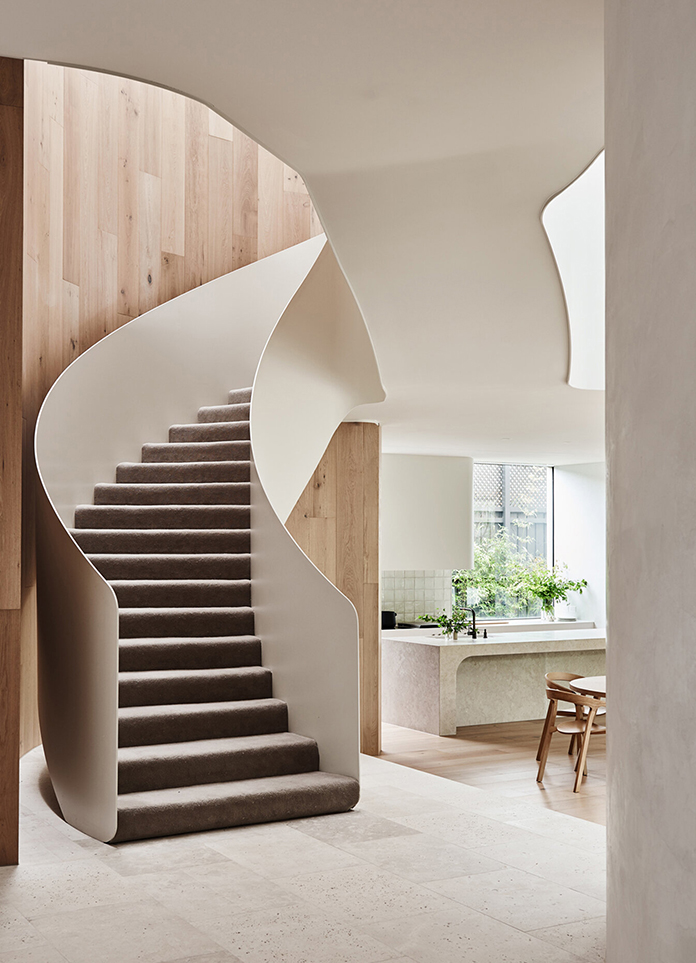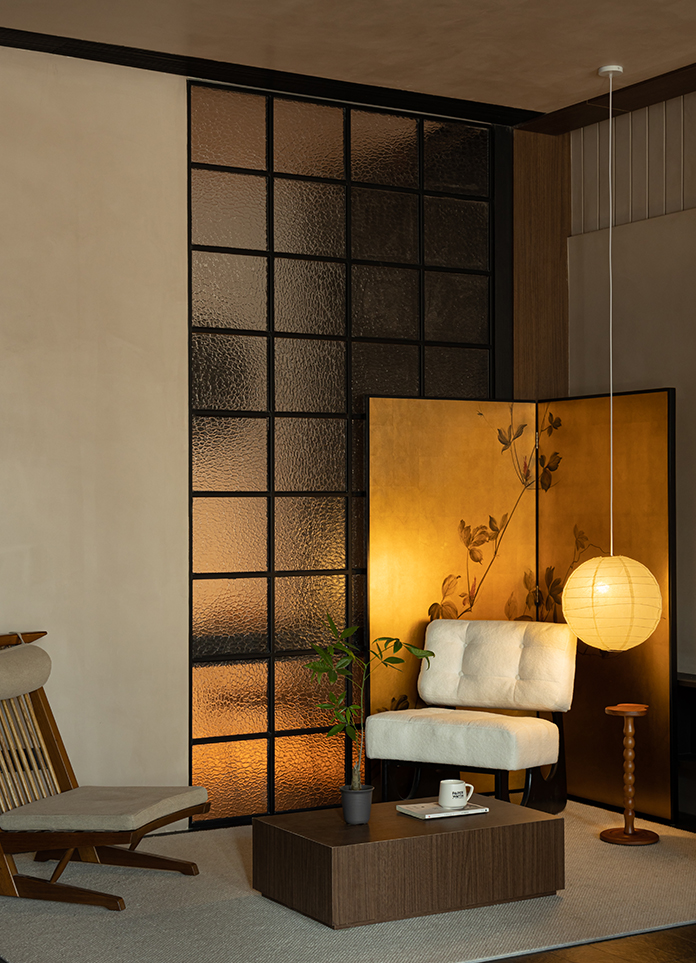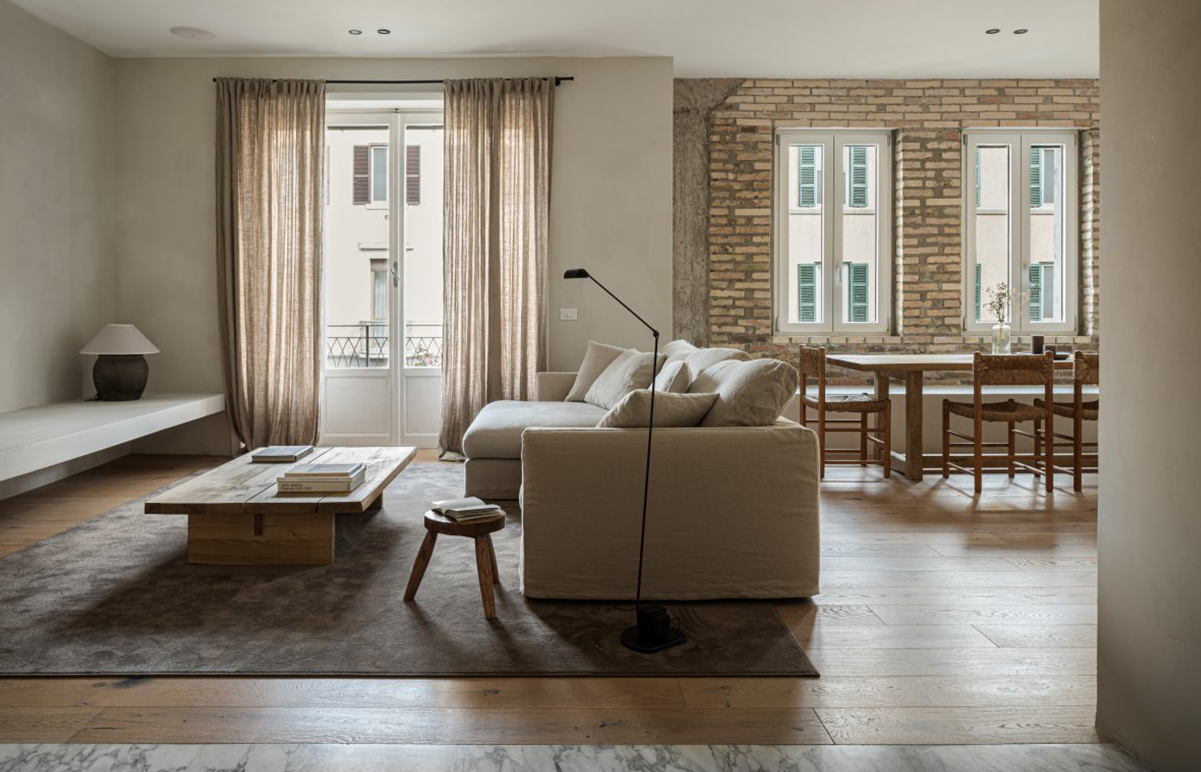
After about a month spent meticulously selecting what to keep from the previous life of those spaces, Valerio Romondia began the design process with the objective not of overwriting, but of writing the second part of the story of the apartment. The first step was to outline the new volumes, no longer many small rooms arranged in sequence but a huge living room where life is concentrated inside the house.
The pre-existing marble floors disassembled, slightly restored and placed again just in the hallway, to embellish the connection between the living and sleeping areas. All around wooden floors and delicate walls treated with lime plaster, imperfect, material, able to capture the light and diffuse it delicately.The building where the house is located could almost be considered a testimony of the transition between old and new, between solid brick walls and reinforced concrete structures. Precisely these two elements, both laid bare in no uncertain terms, reveal the original soul of the past, restoring a timeless, relaxed, human atmosphere to the rooms.
There is almost no furniture, there are radiators with a rough finish, sometimes in the center of the room, without a wall that encloses them. Then there are some benches, perhaps it is too kind to define them as such, huge, immeasurable, more than anything else they are volumes of masonry treated with lime plaster, suspended or monolithic, rough, almost monastic, but at the same time able off silently defining the spaces , in harmony with the rest of the elements. The kitchen island, in masonry too with a travertine slab on top.
The door that separates the living area from the sleeping area is high, authoritative, in solid wood, without frills, it just has to fulfill its role, as well as the custom made dining table, in solid wood too. The kitchen is instead, like the other storage in the house, a simple containment wall, lacquered with the same warm and natural shade of the walls to blend in as much as possible with them, at the center of this is the operational area covered on the top and bottom with the same travertine used for the central island.
- Interiors: Valerio Romondia
- Photos: Dario Borruto
